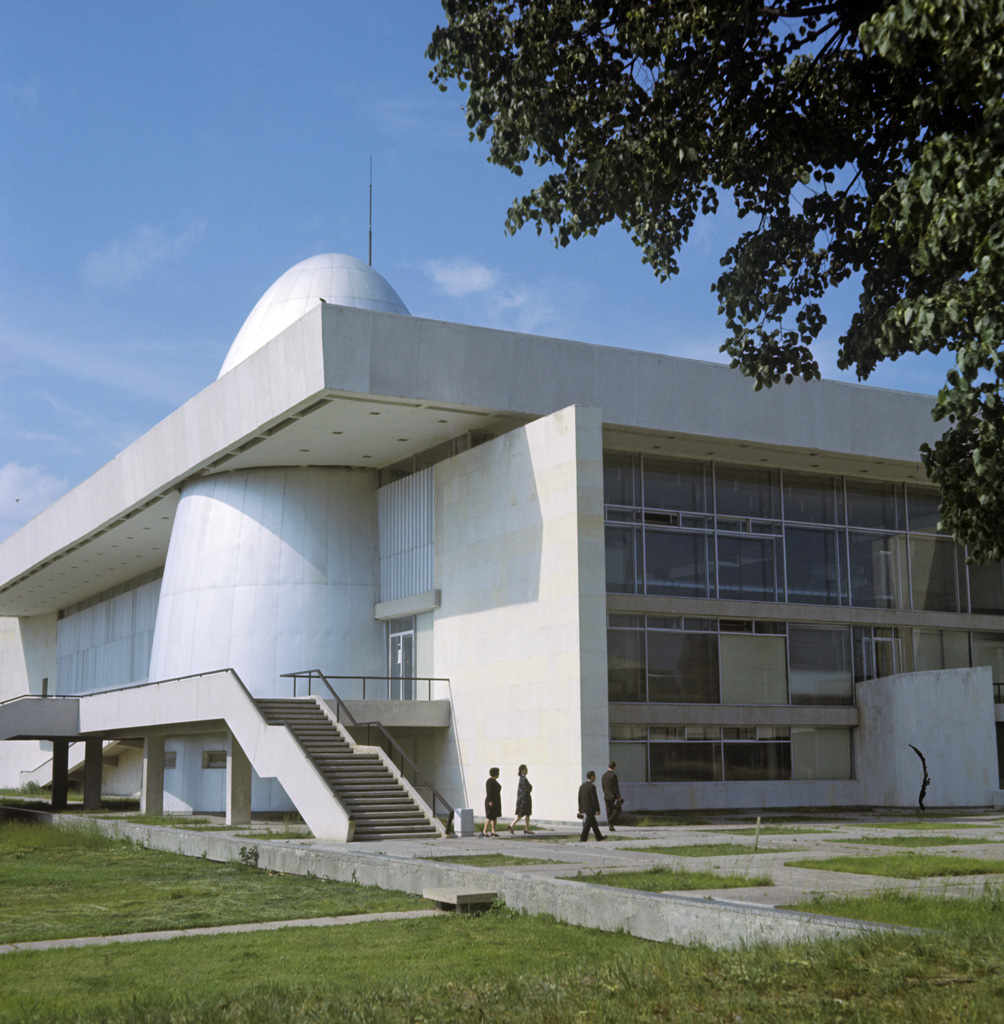Gosudarstvennyĭ muzeĭ istorii kosmonavtiki im. K.Ė. T︠S︡iolkovskogo
Enlarge text Shrink text- K.Ė. T︠S︡iolkovskiĭ, 1968.
- Perechenʹ dokladov, prochit. na I-XIX nauchnykh chtenii︠a︡kh K.Ė. T︠S︡iolkovskogo, 1966-1984 gg., 1985:
- LC Russian books file
The Konstantin E. Tsiolkovsky State Museum of the History of Cosmonautics (Russian: Государственный музей истории космонавтики имени К.Э.Циолковского) is the first museum in the world dedicated to the history of space exploration. It was opened on 3 October 1967 in Kaluga, and is named after Konstantin Tsiolkovsky, a school master and rocket science pioneer who lived most of his life in this city. The driving force behind the creation of the museum was Sergei Korolyov, chief designer of RKK Energiya. The building was designed by Boris Barkhin, Evgeny Kireev, Nataliya Orlova, Valentin Strogy and Kirill Fomin, and the cornerstone was laid by Yuri Gagarin on 13 June 1961. The museum has over 100,000 visitors per year and has 127 employees, of whom 43 are curators.
Read more on Wikipedia >
 Corporate Body
Corporate Body


.jpg)
